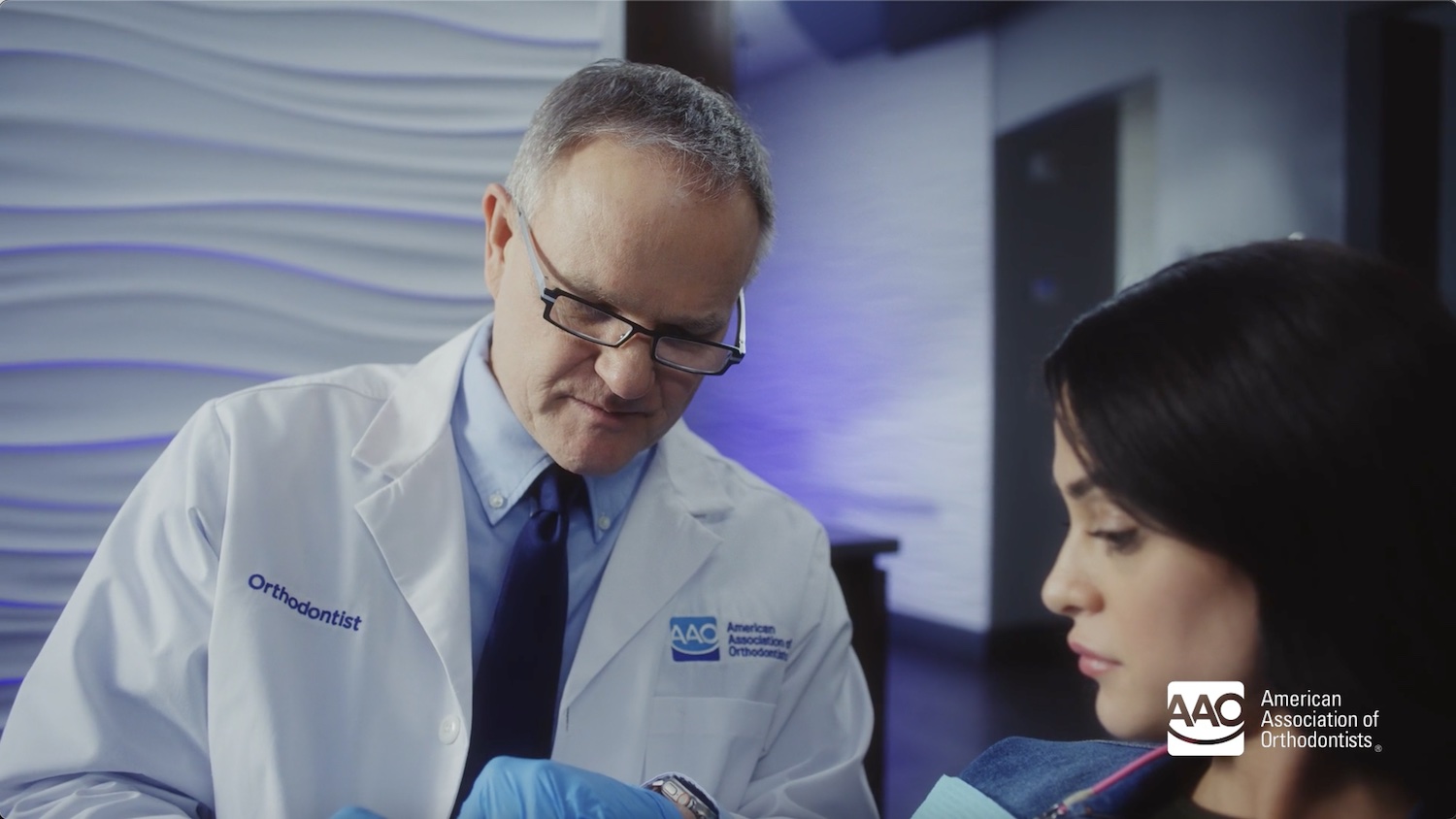Orthodontic treatment creates a more aesthetically pleasing smile while ensuring your teeth and jaws are healthy and function properly. This transformative treatment begins with an in-person consultation, where your orthodontist will use X-rays or dental imaging to gain a complete picture of your oral health and create a tailored treatment plan that meets your unique needs. While virtual consultations may be appealing for their convenience, the level of detail achieved by in-person visits is essential for successful treatment.
X-rays and dental imaging are used during the initial consultation to go beneath the visible surface, revealing the intricate details of your oral anatomy. From diagnosing complex orthodontic issues to crafting precise, personalized treatment strategies, dental imaging provides insights into the underlying structure of your teeth and jaw for effective treatment planning.
In this article, we’ll explore the critical role of in-person consultations, including X-rays and dental imaging, in orthodontic treatment. We’ll discuss how these tools contribute to accurate diagnoses, effective treatment plans, and successful outcomes. Whether you’re considering braces, aligners, or any other orthodontic treatment, AAO can help you understand the importance of the initial steps.
Why Do In-Person Consultations Matter?
Because each smile is unique, effective orthodontic treatment must be highly personalized. In-person consultations allow your orthodontist to thoroughly examine your oral health, going beyond what they may see at a glance, evaluating your teeth, jaws, bite, and overall facial structure. This hands-on evaluation allows them to identify orthodontic issues that could significantly influence your treatment plan.
In-person consultations also provide invaluable direct, two-way communication with your orthodontist. This is your opportunity to share your concerns, goals, and preferences directly with your doctor, and it allows your orthodontist to explain the potential treatment options, considerations, and expectations.
An in-person consultation also provides the chance for immediate feedback. Questions can be answered on the spot, and any concerns can be addressed directly, ensuring you receive clarity and peace of mind right from the start. Your orthodontist can also provide instant advice on what to expect during the treatment process, how to prepare for it, and how to manage any immediate oral health concerns.
The Role of X-Rays and Dental Imaging in Orthodontics
X-rays and dental imaging provide a window into the complex world beneath the surface of your smile. These diagnostic tools are essential for uncovering the hidden aspects of your oral anatomy, ensuring that your orthodontic treatment is effective and precisely tailored to your unique needs. Orthodontists use several types of X-rays and imaging techniques:
- Panoramic X-rays offer a broad view of the teeth, jaws, sinuses, and nasal area, helping to identify issues like impacted teeth, bone abnormalities, and wisdom teeth development.
- Cephalometric X-rays provide a side view of the face, showcasing the teeth in relation to the jaws. This imaging is invaluable for planning tooth movement and understanding the relationship between different parts of the face and skull.
- 3D Cone Beam CT (CBCT) scans offer a comprehensive, three-dimensional view of the teeth, soft tissues, nerve pathways, and bone in a single scan. This detailed image is used for complex diagnoses and treatment planning, including implant placement, jaw growth evaluation, and airway assessment.
X-rays allow orthodontists to see the positioning of the teeth’s roots, the health of the bone, and any issues that could impact treatment, such as compromised oral health, underlying dental conditions, or skeletal abnormalities. This detailed information is vital for designing a customized treatment plan that addresses the functionality and aesthetics of your smile and bite, while minimizing potential complications during treatment.
Beyond their role in initial diagnosis and planning, X-rays and dental imaging are helpful tools for monitoring treatment progress. They allow orthodontists to track changes in tooth position, bone health, and jaw alignment over time, ensuring that treatment is progressing as expected.
The Importance of In-Person Imaging for Successful Treatment
The precision and success of orthodontic treatment doesn’t only rely on the expertise of the orthodontist but also on the quality and clarity of the diagnostic tools they use. In-person imaging, including X-rays and dental scans, is pivotal in ensuring that each treatment plan is as effective and efficient as possible.
Accuracy and Precision
In-person imaging provides unparalleled accuracy and precision. The detailed views that panoramic X-rays, cephalometric analysis, and 3D CBCT scans provide allow orthodontists to assess tooth positioning, bone structure, and root alignment. This level of detail is essential for identifying the most effective treatment and for customizing the approach to your specific anatomy.
Hands-On Evaluation
While virtual visits can be convenient, in-person appointments allow your orthodontist to physically examine your mouth and facial structure, providing crucial information that cannot be captured through virtual consultations or photographs alone. This data helps orthodontists identify irregularities, asymmetries, or structural problems that may impact your treatment. This face-to-face time with the orthodontist also allows you to discuss your concerns, get answers to your questions, and learn about your treatment options, fostering trust and ensuring clear communication throughout your orthodontic care.
Customized Treatment Planning
Orthodontic treatment is not a one-size-fits-all solution. The detailed insights gained from in-person imaging enable orthodontists to tailor treatment plans to each patient’s unique needs. Imaging provides the data to customize every aspect of your treatment, whether it’s determining the optimal placement for braces or aligners, planning surgical interventions, or predicting how the teeth will move over time. Your orthodontist will use the information they gain from your in-person consultation to determine the best orthodontic appliances, treatment duration, and adjustments required to achieve optimal results.
Risk Assessment and Management
One of the most significant advantages of in-person imaging is detecting potential issues before they become more serious problems. X-rays and scans can reveal hidden decay, root resorption, bone loss, and other conditions that might not be visible during a standard examination. Dental imaging also enables orthodontists to assess potential risks associated with orthodontic treatment. By identifying these issues and potential risks early, orthodontists can adjust treatment plans to address them, preventing complications and ensuring a smoother, more predictable treatment process.
How Advanced Technology Enhances Orthodontic Imaging
The evolution of technology has significantly impacted every field of medicine, including orthodontics, particularly in the realm of diagnostic imaging. Today’s advanced imaging technologies offer unprecedented clarity and detail and improve the patient experience by making the process more efficient and less invasive.
Advanced imaging technologies can be integrated with digital treatment planning tools, allowing orthodontists to simulate treatment outcomes, adjust treatment plans in real time, and even customize orthodontic appliances. This collaboration between imaging technology and treatment planning enhances the effectiveness of orthodontic interventions, ensuring that patients receive the most accurate and personalized care possible.
Advances in imaging technology have also focused on enhancing patient safety and comfort. Reduced radiation exposure, non-invasive scanning methods, and faster imaging times contribute to a more patient-friendly diagnostic process.
Embrace the Power of Orthodontic X-Rays with an AAO Orthodontist
As we’ve explored, orthodontic X-rays and dental imaging are essential components of the orthodontic treatment process, offering the accuracy, precision, and customization necessary for successful outcomes. It’s a step in the process and the cornerstone of effective, personalized orthodontic care.
AAO orthodontists utilize advanced imaging technology to achieve the best possible results for every patient. We encourage anyone considering orthodontic treatment to prioritize in-person consultations, as visiting with your orthodontist and completing dental imaging can revolutionize your treatment process. You deserve the most thorough and personalized approach to care, and if you’re thinking about starting orthodontic treatment, schedule an in-person consultation with an AAO orthodontist today to take the first step toward the smile you’ve always dreamed of.



